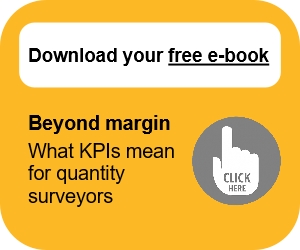Key performance indicators KPI
Key performance indicators (KPIs) can be used to:
- Monitor costs.
- Track progress.
- Assess client satisfaction.
- Identify strengths and weaknesses.
- Compare performance across and between projects.
- Assess specific areas of a project such as sustainability, safety, waste management, etc.
It is important that KPIs are identified in tender documentation and that the regular provision of the information required to assess them is a requirement of the contract. This may require the provision of sub-contractor information where performance on specific packages is to be monitored.
KPIs may be of particular importance where the contract stipulates that the contractor will be rewarded or penalised based on their performance relative to certain indicators.
Examples of KPIs that can be used on construction projects include:
- Cost vs. budget. The budgeted cost of work that has actually been performed in carrying out a scheduled task during a specific time period.
- Project progress relative to milestones.
- Number of complaints.
- Number of incidents/accidents.
- The number of working hours spent on different aspects of the works.
- The use of materials (for example, the amount of concrete poured).
- The number of defects.
- The amount of waste generated and the amount of recycling.
- The number of variations.
KPIs are also a means to help with the rapid comprehension of the current financial position. KPIs summarise the comparison of figures against the budgeted values and also industry benchmarks that are published from the result of inter-firm comparison reports.
KPIs to track profitability may include:
- Turnover by director /partner.
- Turnover by fee earner.
- Profit by director/partner.
- Profit by fee earner.
Only genuinely important performance indicators should be monitored so that it does not simply become a time consuming paper exercise.
KPIs can also be used more broadly as part of a bench-marking exercise to assess the performance of one project relative to another, to assess businesses compared to others within the industry and to assess the performance of the industry as a whole relative to the rest of the economy.
[edit] Related articles on Designing Buildings
- Acceleration.
- Benchmarking.
- Best value.
- Budget.
- Building performance.
- Contractor's master programme.
- Defects.
- Design web.
- Earned value.
- Facility condition index FCI.
- Health performance indicators in the built environment.
- How progress is agreed in construction.
- Identifying the causes of trends in construction labour productivity.
- Information release schedules.
- Market value.
- Mechanical and electrical maintenance customer satisfaction KPI's 2017.
- Milestones.
- Performance.
- Performance requirements.
- Programme consultant.
- Progress of construction works.
- Project crashing.
- Project programme.
- Project scorecard.
- RAG rating.
- Schedule performance index (SPI).
- Short period programme.
- Strategic performance targets.
- Time-location chart.
- Time management of construction projects.
- Track record.
- Turnover.
- Variations.
- Value management.
- Whole life costs.
Featured articles and news
The history of building regulations
A story of belated action in response to crisis.
Moisture, fire safety and emerging trends in living walls
How wet is your wall?
Current policy explained and newly published consultation by the UK and Welsh Governments.
British architecture 1919–39. Book review.
Conservation of listed prefabs in Moseley.
Energy industry calls for urgent reform.
Heritage staff wellbeing at work survey.
A five minute introduction.
50th Golden anniversary ECA Edmundson apprentice award
Showcasing the very best electrotechnical and engineering services for half a century.
Welsh government consults on HRBs and reg changes
Seeking feedback on a new regulatory regime and a broad range of issues.
CIOB Client Guide (2nd edition) March 2025
Free download covering statutory dutyholder roles under the Building Safety Act and much more.
AI and automation in 3D modelling and spatial design
Can almost half of design development tasks be automated?
Minister quizzed, as responsibility transfers to MHCLG and BSR publishes new building control guidance.
UK environmental regulations reform 2025
Amid wider new approaches to ensure regulators and regulation support growth.
The maintenance challenge of tenements.
BSRIA Statutory Compliance Inspection Checklist
BG80/2025 now significantly updated to include requirements related to important changes in legislation.
























Comments